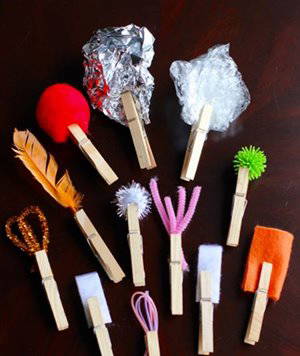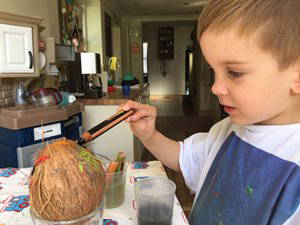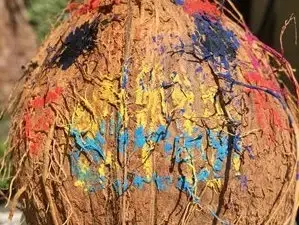Mark making is a term used for the creation of different patterns, lines, textures and shapes. This may be on a piece of paper, on the floor, outside in the garden or on an object or surface.
It could be a simple dot or a line across a paper, all of this contributes to mark making and fundamentally is the basis of developing the writing skill.
Why is mark-making important?
- Mark-making is not just about early writing; it is a sensory and physical experience which can be enjoyed by all ages and abilities.
- As well as early writing, mark-making can develop into mathematical representation and creative expression.
- Mark-making in all forms needs to be valued, encouraged and discussed.
- Depending on how you undertake mark-making you can contribute to all the areas of learning and development.
Download the full mark-making factsheet.
How does mark-making support a child’s learning?
Mark-making allows a child to:
- Investigate a new concept
- Represent thoughts and ideas
- Develop their understanding of the world
- Tell a story
- Solve problems
- Express their feelings
- Create a gift for someone
- Relive an experience
- Record what they see.
Go outside
While you are exploring the environment you are increased understanding the world.
The natural world provides lots of inspiration for mark-making with leaf and bark rubbing, flower pressing, sticks, rocks and creations using fir cones and seed pods.
Why not get some washable chalk and write on the ground?
Varying the size, colour and texture of paper can make a difference to mark-making experiences, with very large paper giving active children room to spread out, explore and collaborate.
Here are some ideas to take mark-making to the next level:
Mark-making doesn’t just have to be with brushes and pens!
Don’t just use normal paint brushes and acrylic paints to mark marks. You can use a huge array of materials including:
- Your hands!
- Sponge
- Foil, cling film, greaseproof paper
- Feathers, leaves, sticks – anything from outside!
- Felt
- Pipe cleaners
- Cotton Wool
- String
- Pens, Pencils, Crayons
- Spatulas, Spoons, Forks, Whisks
- Carrots, cucumber, potatoes
- Toothbrushes
Take a look at our mark-making Pinterest page!

Other opportunities for mark-making
There are plenty of chances for mark-making and representation within role-play situations. For example, during travel role play, the children can draw maps, roads, homes and give directions. Also, to encourage mathematical mark-making, make available calendars, raffle tickets, recipes, and petty cash receipts.
Technology can be used for mark-making with paint and word processing programmes on computers, drawing apps on tablets, and photographs which can be used to make books and stories later. Photocopiers, scanners, and whiteboards can also be useful mark-making tools.
Be inspired by what your children are interested in. Are they loving the latest children’s film? Want to dress up as a particular character? Have they learnt a new work or new skill?
Maybe they have just learnt to tie their shoe laces, why don’t you use those laces in mark-making? If their favourite film has cultural elements, why not paint and mark-make on coconuts just like a member did at home with their son:


Remember..
Mark-making is not about creating the perfect picture that looks like a tree, animals or letters. So don’t worry if your child only likes drawing ‘scribbles’ or certain shapes, this is the beginning of writing and literacy! Each achievement should always be celebrated!
Additional Resources
- PACEY Mark-making and Representation Factsheet
- Website – Earlyarts.co.uk
- PACEY Tips, factsheets and downloads
- The Campaign for Drawing
- PACEY Literacy in the early years book
